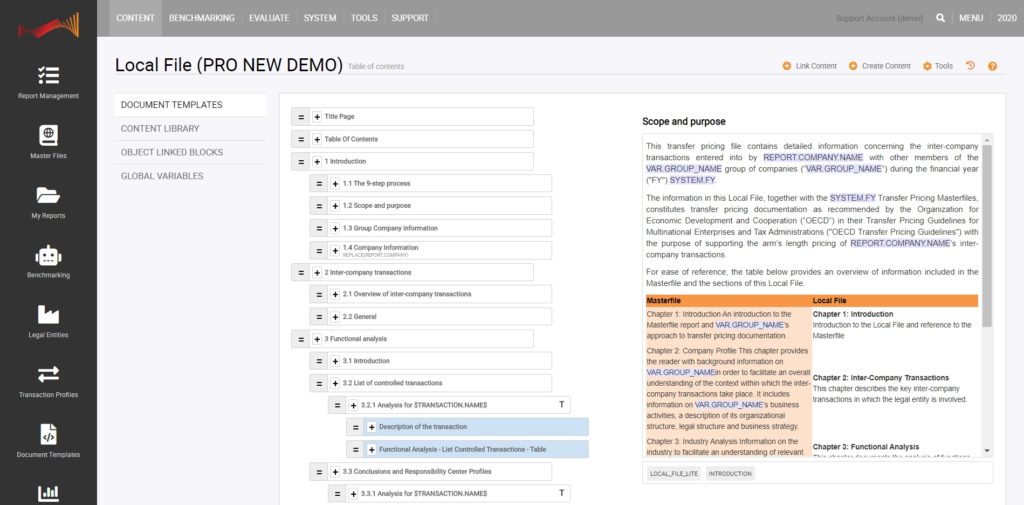When you are looking for purchasing the best transfer pricing software for your company, there are many considerations in making the right decision. When you compare transfer pricing software, one of the very important points to consider is to understand how much you are in control over the final outcome the software produces: your local files and master files.
Lately, we have been talking to several new clients about their software selection process and their competitors analysis. We discovered that most TP software solutions offered on the market at this moment, produce very static transfer pricing documents.
Static vs. dynamic generation of TP documentation
When in need for a local file in a format that deviates from the standard OECD structure, it is impossible to generate the documentation using a “static software product” because the strict way the software is designed won’t let you make changes in the output produced.
When a tool generates static documentation you are in risk of generating piles of paper having duplicate texts. Even when you are in need for a simple local file for an entity without substantial activity.
Additionally, software tools that are producing static documentation make you much more dependant on the knowledge of the software provider. When using a “dynamic software” you can create your own templates that deviate from the standard structure or even templates in different languages. In this case, you are not depending on software provider or specific advisor and free to make a choice whether do it yourself or ask for assistance.
A “dynamic” approach is also beneficial for advisors. As an advisor, you want to be in full control over the output, after all, it is your name and signature which is on the document. Also, formatting of the text and branding such as adding your corporate logo on the page headings are crucial to producing professional documentation that follows your company’s standards and guidelines.
How can our philosophy help you when comparing transfer pricing software?
When using TPGenie you are flexible: TPGenie uses a “dynamic” approach to document templates for your Local Files, Master Files or intercompany agreements.
The document template acts as a blueprint and in analogy to Lego constructor, it is an instruction on how to build a final product. It is basically a text template which is sliced into information blocks. Each block holds variables and conditions. Based on the transfer pricing data “fed” into the software, the system reads the conditions set in a document template and produces Word or PDF file. In this manner, you are super versatile in creating the final output. It is totally up to you whether you want a very minimalistic local file holding only the necessary contents or a document with dozens of pages and appendixes that adds “substance”. Additionally, you can link certain document templates to a specific country or region. In this way, when documents are produced for a specific entity they will follow the output format that is required by local legislation.
TPGenie includes standard local file and master file templates that follow OECD as well as country-specific local file templates for Italy, Poland, United Status, India and other countries. However, you are always free to adjust any templates to your likings and needs.

Recent Comments